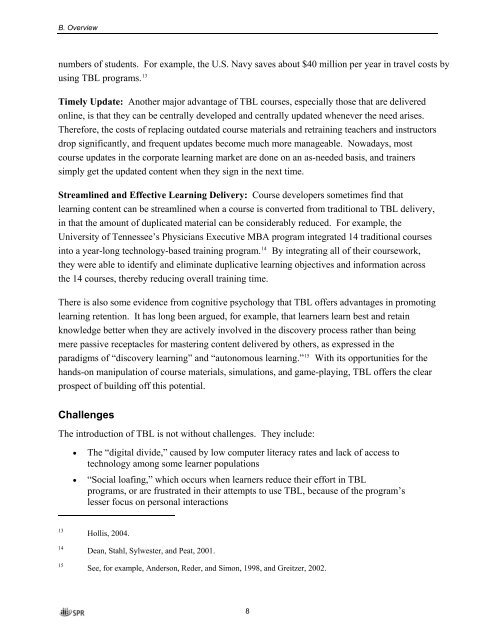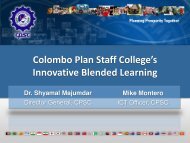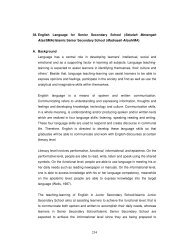Technology-Based Learning Strategies Report - APEC HRDWG Wiki
Technology-Based Learning Strategies Report - APEC HRDWG Wiki
Technology-Based Learning Strategies Report - APEC HRDWG Wiki
You also want an ePaper? Increase the reach of your titles
YUMPU automatically turns print PDFs into web optimized ePapers that Google loves.
B. Overviewnumbers of students. For example, the U.S. Navy saves about $40 million per year in travel costs byusing TBL programs. 13Timely Update: Another major advantage of TBL courses, especially those that are deliveredonline, is that they can be centrally developed and centrally updated whenever the need arises.Therefore, the costs of replacing outdated course materials and retraining teachers and instructorsdrop significantly, and frequent updates become much more manageable. Nowadays, mostcourse updates in the corporate learning market are done on an as-needed basis, and trainerssimply get the updated content when they sign in the next time.Streamlined and Effective <strong>Learning</strong> Delivery: Course developers sometimes find thatlearning content can be streamlined when a course is converted from traditional to TBL delivery,in that the amount of duplicated material can be considerably reduced. For example, theUniversity of Tennessee’s Physicians Executive MBA program integrated 14 traditional coursesinto a year-long technology-based training program. 14 By integrating all of their coursework,they were able to identify and eliminate duplicative learning objectives and information acrossthe 14 courses, thereby reducing overall training time.There is also some evidence from cognitive psychology that TBL offers advantages in promotinglearning retention. It has long been argued, for example, that learners learn best and retainknowledge better when they are actively involved in the discovery process rather than beingmere passive receptacles for mastering content delivered by others, as expressed in theparadigms of “discovery learning” and “autonomous learning.” 15 With its opportunities for thehands-on manipulation of course materials, simulations, and game-playing, TBL offers the clearprospect of building off this potential.ChallengesThe introduction of TBL is not without challenges. They include:The “digital divide,” caused by low computer literacy rates and lack of access totechnology among some learner populations“Social loafing,” which occurs when learners reduce their effort in TBLprograms, or are frustrated in their attempts to use TBL, because of the program’slesser focus on personal interactions131415Hollis, 2004.Dean, Stahl, Sylwester, and Peat, 2001.See, for example, Anderson, Reder, and Simon, 1998, and Greitzer, 2002.8
















